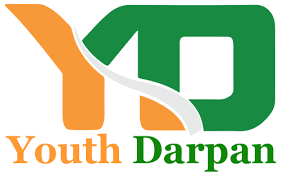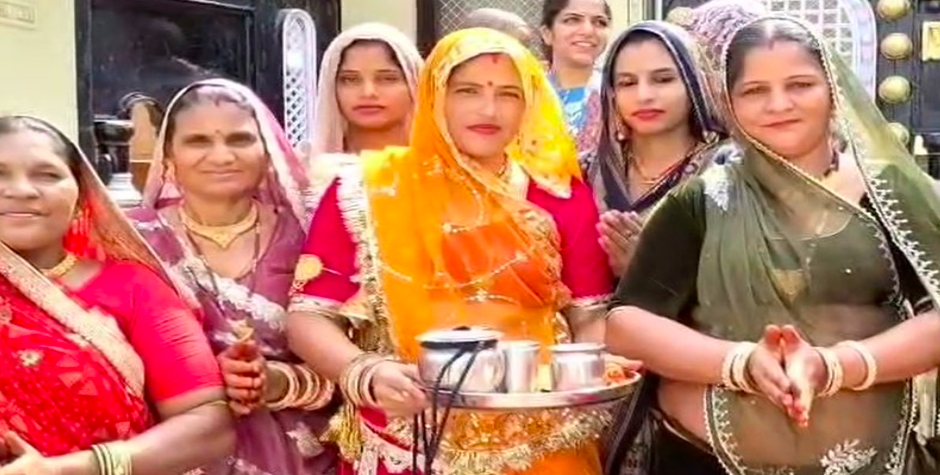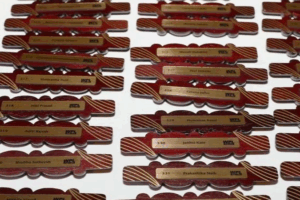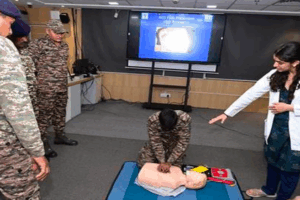Govardhan Puja, a festival deeply rooted in Indian tradition and spirituality, was celebrated across the country on Wednesday with immense fervour and unwavering faith. From the vibrant heartlands of Rajasthan to Uttar Pradesh, the spirit of devotion united millions in celebration.
In Rajasthan’s Bundi, the festival coincided with the second day of the grand Deepotsav. Homes glowed not just with lamps but with faith, as families worshipped Govardhan, symbolising the mountain lifted by Lord Krishna to protect the people of Vrindavan from the wrath of Indra, the rain god. To commemorate this divine intervention, women sculpted idols of Govardhan using cow dung, decorating them with fruits, flowers, puris, papdis, ghee, milk, curd, and other offerings. These traditional rituals were performed with heartfelt prayers for happiness, peace, and prosperity in their families.
As elders offered blessings, devotees performed parikrama (circumambulation) of the sacred idol, believing that just as Krishna protected the villagers, ‘Govardhan Maharaj’ would bless their homes with abundance and shield them from adversity.
In Deoria, Uttar Pradesh, the spirit of Govardhan Puja was no less alive. The entire region resonated with songs of devotion as women in traditional attire sculpted ‘Govardhan Maharaj’ and performed rituals with meticulous care. It is widely believed here that the puja not only strengthens the bond between siblings but also ensures the long life of brothers, making it akin to a second Raksha Bandhan.
The Annakut offering — a mountain of food symbolising gratitude — was presented with devotion, and women sang auspicious songs, their voices echoing a legacy of generations. In both rural and urban settings, Govardhan Puja continues to serve as a living testament to India’s rich spiritual tapestry.
Moving east, the celebration was equally grand at the ISKCON temple in Mecheda, West Bengal. Devotees gathered for a special Annakut Mahotsav and Govardhan Puja. Prominent political leader and state opposition figure, Subhendu Adhikari, graced the occasion, performing traditional cow worship and participating in devotional kirtans alongside hundreds of others.
In Raebareli, Uttar Pradesh, the temples, especially the Radha Krishna Mandir, buzzed with energy. A grand idol of Lord Govardhan crafted from cow dung was adorned with 56 offerings, continuing a tradition that has remained untouched for years. Devotees thronged the temple, offering prayers and food with unwavering devotion.
Also in Beawar, Rajasthan, the cowherd community continued a tradition that dates back over a thousand years — one that has withstood time, colonisation, and cultural shifts. On Govardhan Puja, the women prepare puri and kheer as offerings, and craft a symbolic mountain from cow dung, which is then beautifully decorated with flowers, oil lamps, and vibrant rangolis. The men of the community perform the actual puja, in keeping with custom.
One unique ritual in Beawar is particularly captivating: unmarried young men attempt to pick up the puri offered as prasad using only their mouths — a task believed to bring them luck in finding a life partner. After the puja, the Govardhan idol is respectfully covered with a cloth. The celebrations formally conclude on Dev Uthani Ekadashi, when a ceremonial bull is used to signify the end of the festivities, paving the way for the wedding season to begin.
In Tonk, another town in Rajasthan rich with Nawabi heritage, households also followed centuries-old customs. Women crafted replicas of Govardhan using cow dung and prayed sincerely for their family’s well-being and prosperity. The shared sentiment across generations remained: such devotion would invite joy and peace into their homes.
Far from the heartlands of north India, the festival also took centre stage in Pune, Maharashtra, where thousands of Punekars came together for the vibrant Govardhan Pahat Diwali celebration. Held at the historic Sarasbaug complex, the event began as early as 5 a.m., attracting crowds who braved the morning chill to witness a cultural spectacle.
The atmosphere was electric with performances that blended tradition and creativity. The Milap cultural program featured melodious Hindi and Marathi songs, powerful Mardaani performances, and dazzling folk dances that infused the Diwali morning with energy and emotion. The sky lit up with colourful fireworks, and the joyous celebration saw people exchange warm Diwali greetings amid tight security arrangements managed efficiently by the Pune Police.
The puja is an important Hindu festival that occurs a day after Diwali. It celebrates the ‘Baal Roop (child form)’ of Lord Krishna and is also known as Annakut or Annakoot, meaning “a mountain of food”. On this day, devotees worship Govardhan Parvat (hill) and offer 56 varieties of vegetarian food and sweets, known as ‘Chappan Bhog’, as an expression of gratitude and devotion.
The festival symbolises the powerful bond of faith, protection, and divine grace between gods and devotees. The story of Govardhan Puja teaches people to respect the forces of nature and to remember that, as mortals, we are deeply dependent on Mother Nature and must remain grateful for her blessings. Lord Krishna’s act of lifting the mountain and saving the villagers demonstrates that bhakti (devotion) is the purest way to connect with divinity.





Add Comment